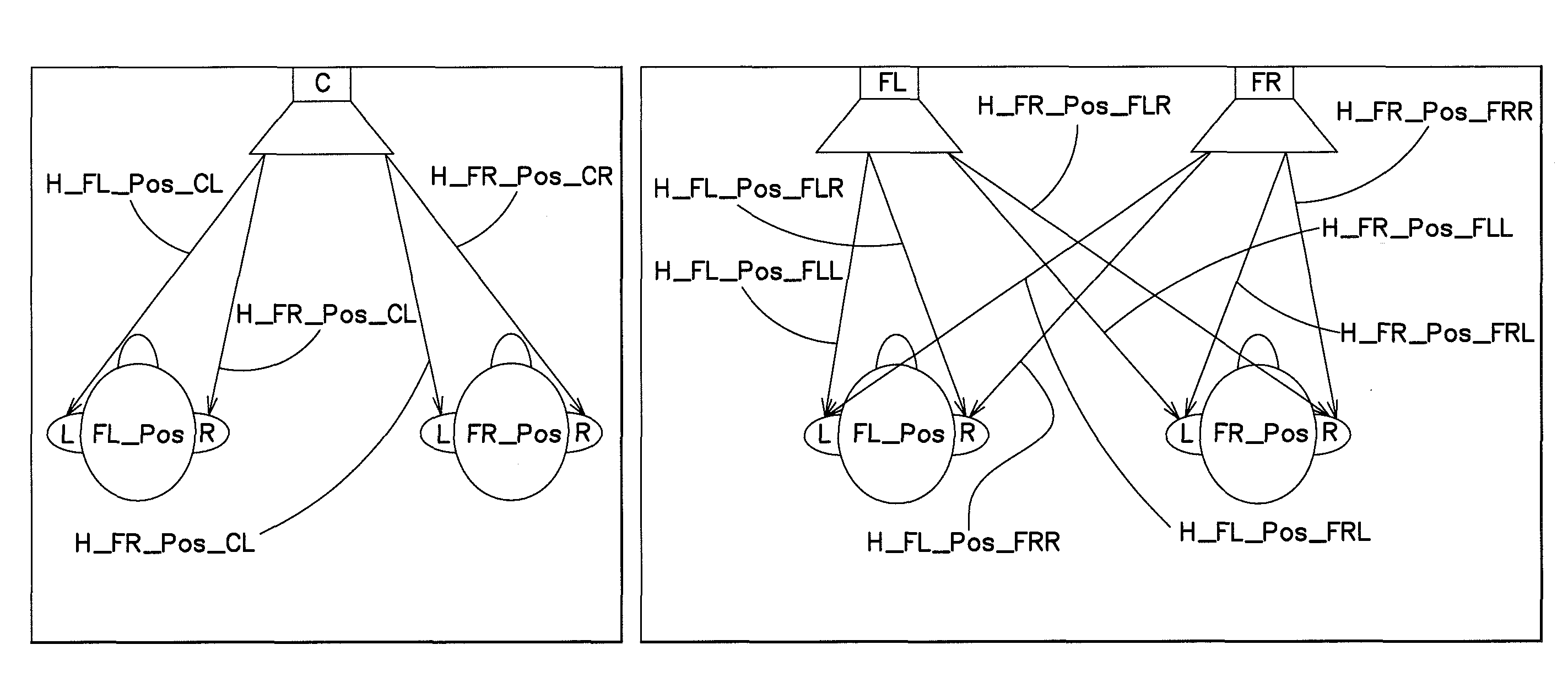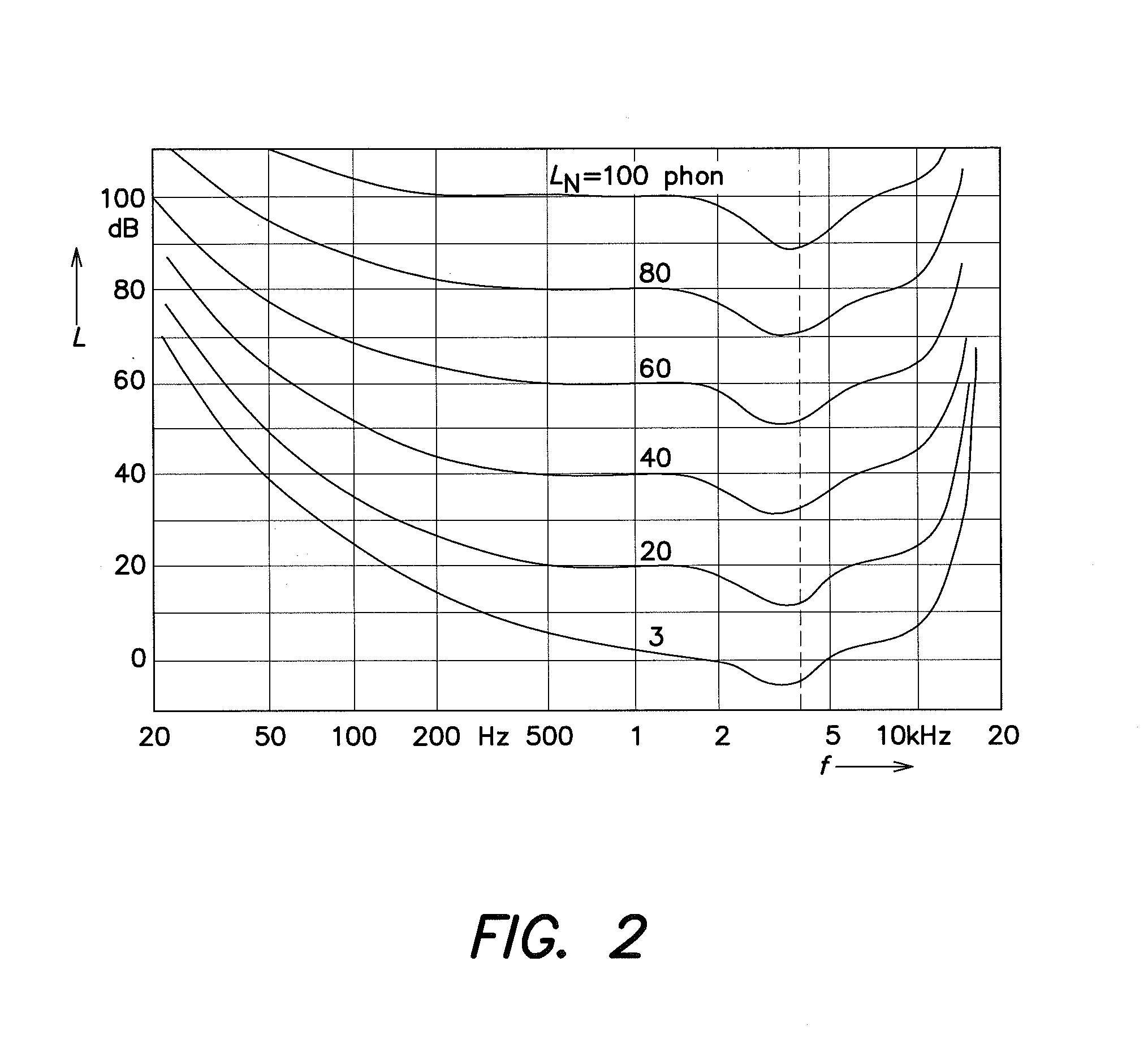Sound system equalization
a sound system and equalization technology, applied in the direction of stereophonic arrangments, loudspeakers, spatial/constructional arrangements of loudspeakers, etc., can solve the problems of inability to meet the needs of motor vehicle applications, wave-field synthesis requires extensive resources such as computational power, memory, amplifier channels,
- Summary
- Abstract
- Description
- Claims
- Application Information
AI Technical Summary
Benefits of technology
Problems solved by technology
Method used
Image
Examples
Embodiment Construction
[0039]The following example describes the procedure and the investigations in order to create a signal processing technique which is also referred to in the following text as AutoEQ, for automatically adjusting, for example, of equalizing filters. Two procedures are investigated that are disclosed in detail further below, together with a sequential technique and a technique for taking account of the maximum interval between a measured level profile and a predetermined target function. The results obtained are used to derive a technique, which is then used for automatic equalizing, that is to say without any manual influence on the parameters involved. The major tonal sensitivities to be taken into account in this case which comprise psycho-acoustic parameters of human perception of sounds, are the location capability, the tonality and the staging.
[0040]In this case, the location capability, which is also referred to as localization, denotes the perceived location of a hearing event,...
PUM
 Login to View More
Login to View More Abstract
Description
Claims
Application Information
 Login to View More
Login to View More - R&D
- Intellectual Property
- Life Sciences
- Materials
- Tech Scout
- Unparalleled Data Quality
- Higher Quality Content
- 60% Fewer Hallucinations
Browse by: Latest US Patents, China's latest patents, Technical Efficacy Thesaurus, Application Domain, Technology Topic, Popular Technical Reports.
© 2025 PatSnap. All rights reserved.Legal|Privacy policy|Modern Slavery Act Transparency Statement|Sitemap|About US| Contact US: help@patsnap.com



